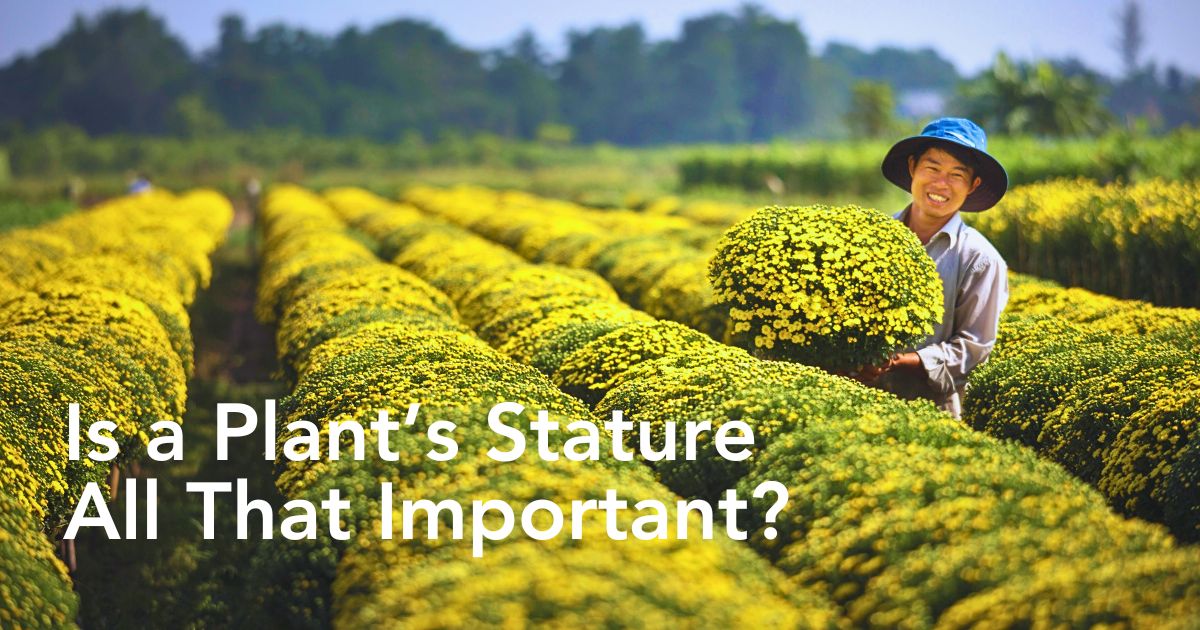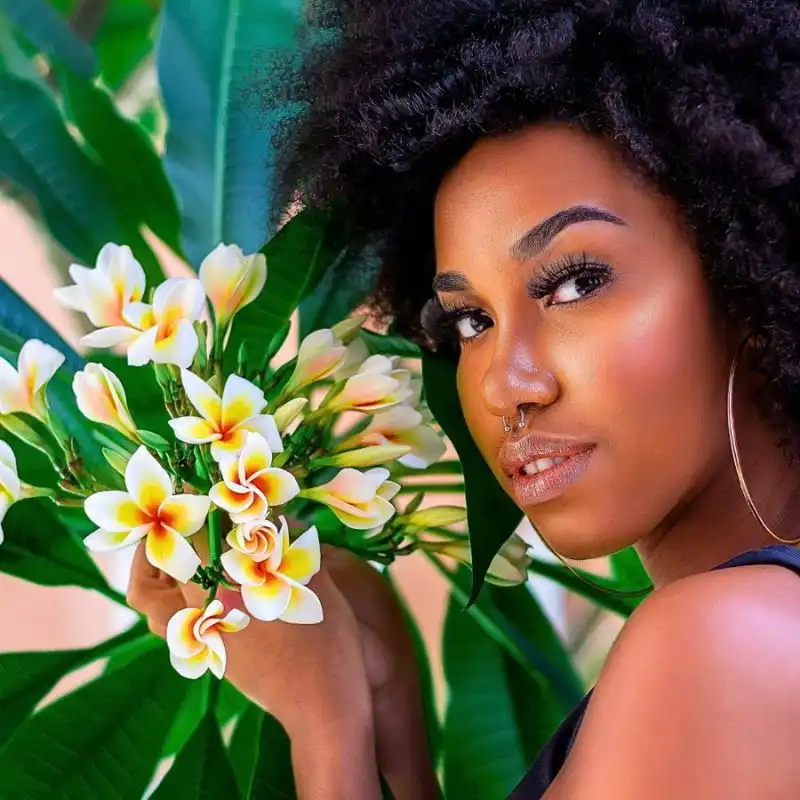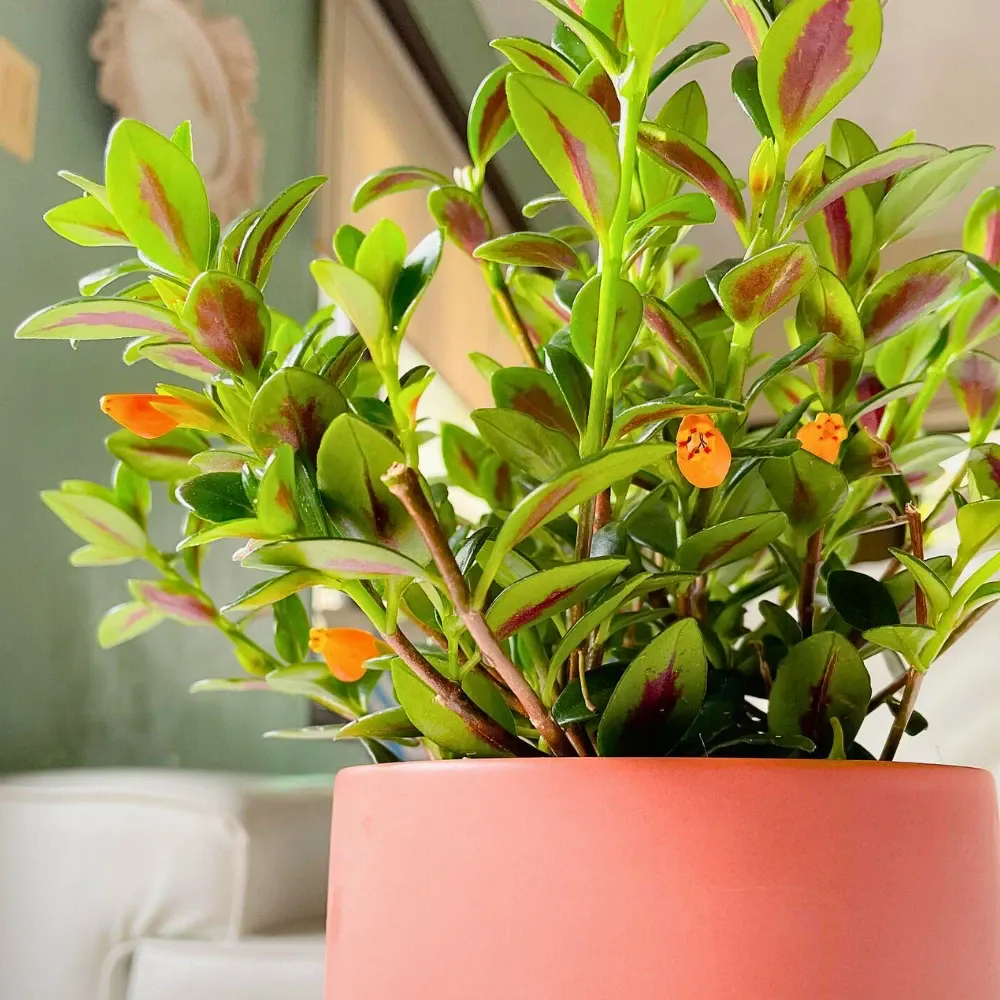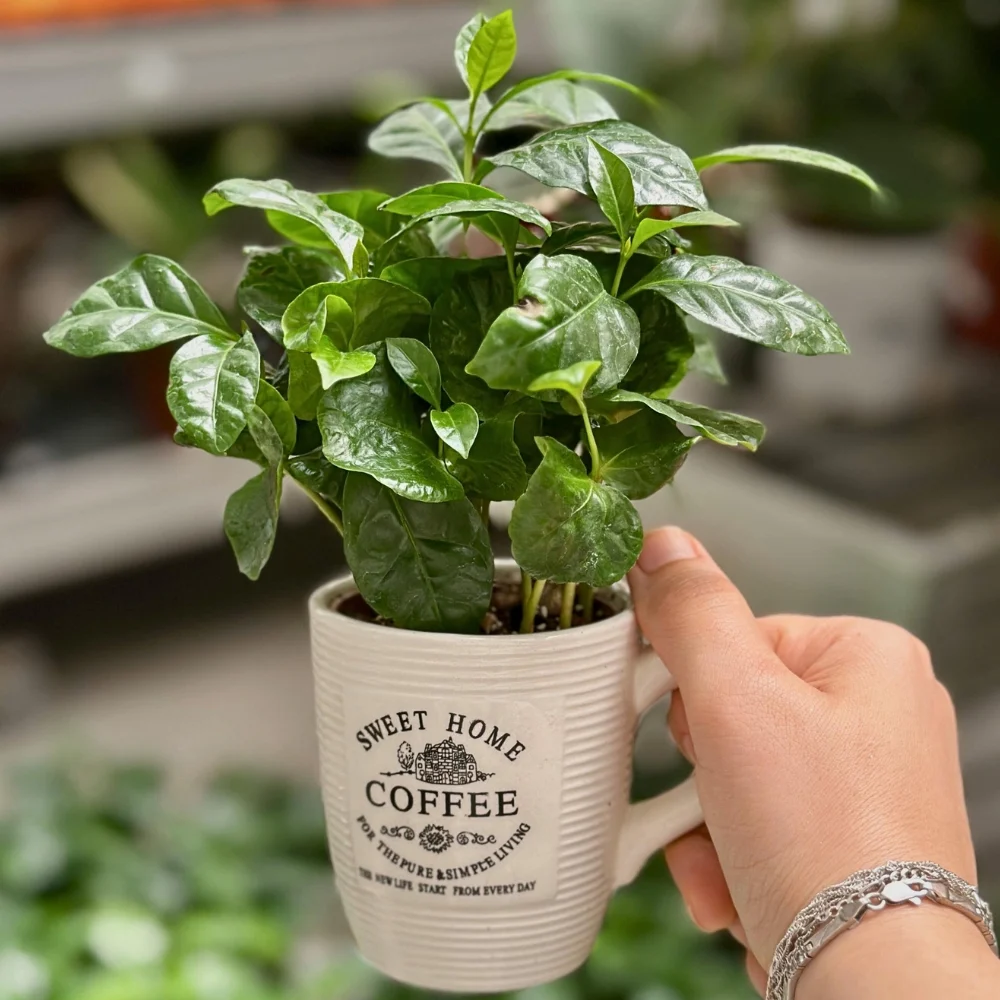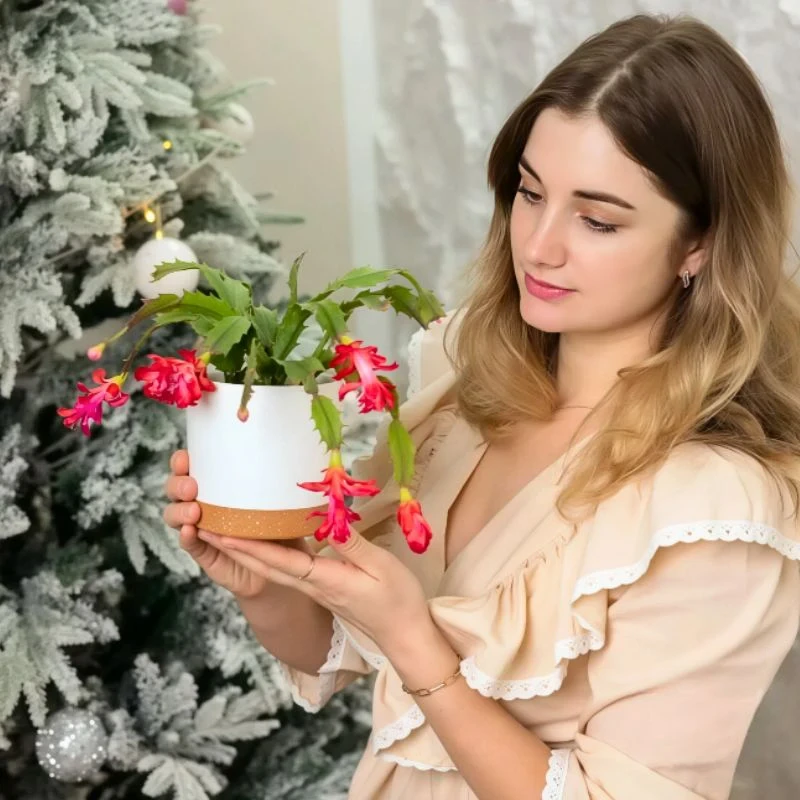When taking a walk through a garden or perhaps just checking out rows of flowers in a greenhouse or the open field, in many cases, one just focuses on the colors, shapes, and fragrances of the flowers. Not many consider the innate relationship between a plant's height and its reproductive success. From those towering sunflowers reaching skywards to the ground-hugging forget-me-nots, the vertical dimension of a plant is one of nature's most fascinating yet intriguing evolutionary strategies.
Yet behind this seemingly simple physical characteristic is a perpetual network of biological trade-offs, resource allocation decisions, and competitive dynamics that fundamentally define how plants reproduce and thrive in their environments. Plant height is more than just a cosmetic feature; it controls flowering success, influencing everything from pollinator attraction to resource distribution, timing of reproduction, and ultimate reproductive output.
The Basic Connection Between Height and Flowering
Plant height is not only a structural characteristic, but also functions as a crucial determinant of reproductive timing and success. A potential physiological mechanism underlying the vegetative growth–flowering phenology relationship is that plants cannot reproduce much earlier than the time at which they have accumulated sufficient material resources (reflected by plant height) and they also cannot delay reproduction much beyond a maximum plant height (Hmax), in which case they may run out of time to produce seeds before the end of the growing season. This relationship suggests that height is a biological indicator of a plant's readiness to reproduce. It ensures adequate resource allocation before the energy-intensive process of flowering begins.

The connection between height and flowering time reveals an evolutionary solution to resource management. Shorter plants that flower early operate under different constraints than their taller counterparts. Early flowering plants have a relatively small resource availability but a long time to develop seeds, while the taller, late-flowering species have a short time for seed development but greater accumulated resources. This trade-off shows how height influences not just the timing of flower production, but the entire reproductive strategy of the plant. The relationship between plant height and flower production, therefore, operates through numerous interconnected systems that collectively determine its reproductive fate.
At its most basic level, height influences how plants capture and use the essential resources needed for flowering–light, nutrients, and water. Taller plants generally possess a competitive advantage in accessing sunlight, positioning their photosynthetic organs above shorter neighbors, and maximizing their energy capture potential. Their high stature translates directly into enhanced photosynthetic capacity, which provides the energetic foundation necessary for robust flower development and maintenance.

But the story becomes more nuanced when one examines the trade-offs inherent in vertical growth. Research has consistently demonstrated that while taller plants may intercept more light per unit of above-ground biomass, they often exhibit reduced efficiency in converting that light into actual growth and reproductive output. This phenomenon suggests that height offers benefits in resource capture but comes with metabolic costs that can limit overall reproductive performance.
Finding the Perfect Plant Height
Much like in the Goldilocks principle, the question of optimal plant height for flower production doesn't have a definite answer, as it depends heavily on species, environmental conditions, and ecological context. However, research reveals that both extremely short and excessively tall plants face unique challenges in their reproductive efforts. Plants that remain too short may struggle to accumulate sufficient resources for robust flower production, while those that grow too tall may exhaust their energy reserves on vegetative growth, leaving insufficient resources for reproduction.
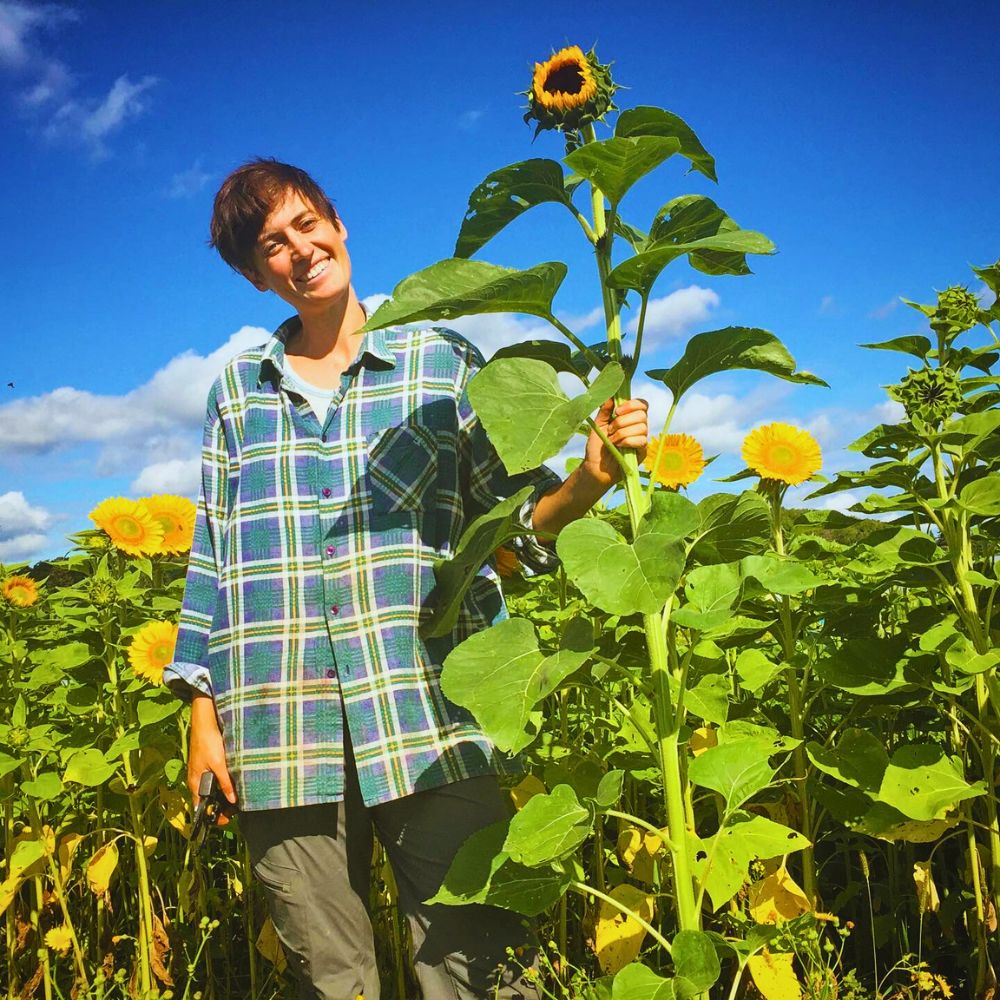

This balance becomes particularly evident in competitive environments where plants must navigate between growing tall enough to compete for light while reserving energy for flower production. Plants in crowded plots regulate their height growth to maintain similar height to neighbors: plants whose tops had been lowered relative to their neighbors accelerated the elongation rate, while plants whose tops had been lifted higher than the neighbors adjusted their growth accordingly. This behavior suggests that plants actively monitor their height relative to competitors and adjust their growth patterns to optimize both competitive advantage and reproductive potential.
Resource Allocation and the Height-Flowering Trade-off
One of the main dimensions in which the relationship between height and flower production revolves is around resource allocation. Plants operate with finite energy and material resources, creating an inherent tension between vegetative growth and reproductive investment. Taller plants have typically invested more energy in structural support, root systems, and photosynthetic machinery, which can enhance their overall resource-gathering capacity but may delay the onset of flowering.
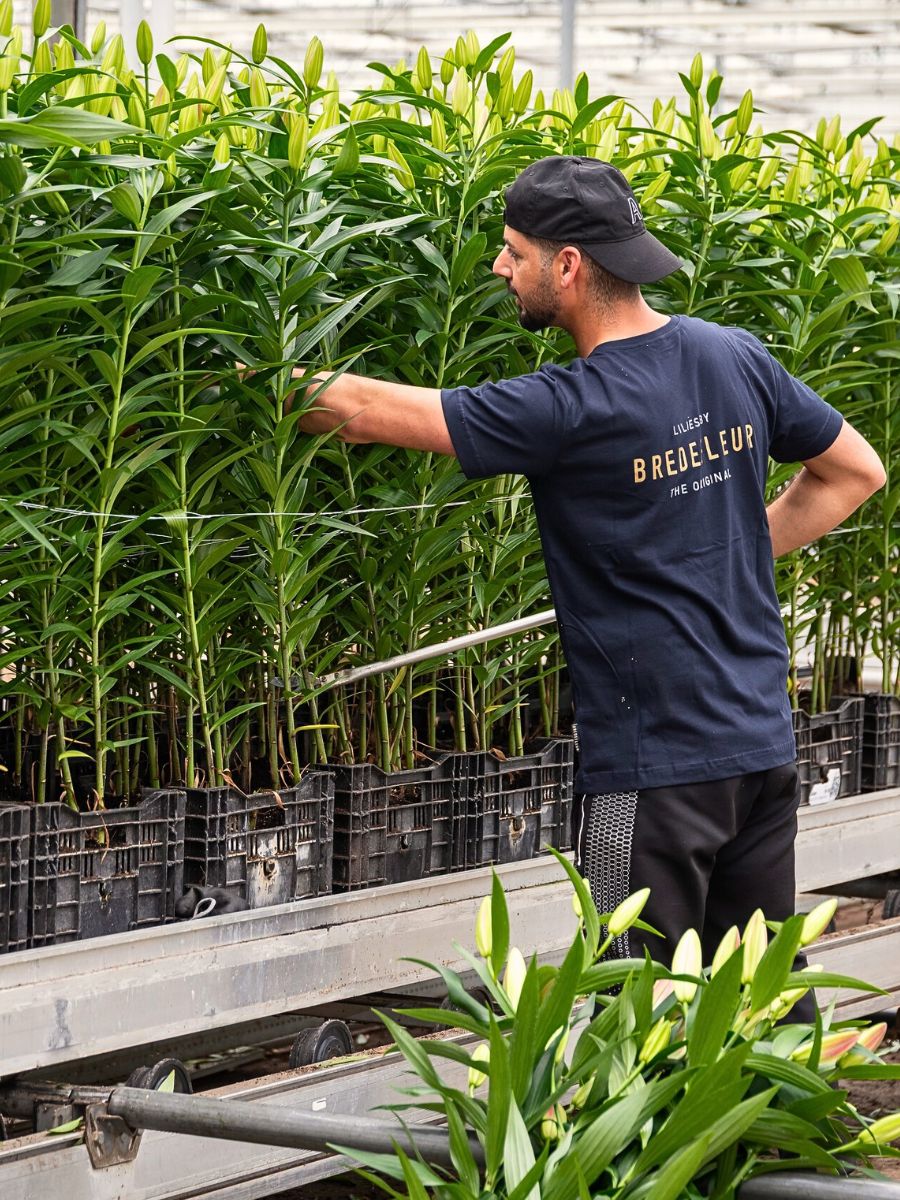
This resource management strategy becomes particularly complex in perennial plants, where height development occurs over multiple growing seasons. These plants must balance immediate reproductive needs with long-term growth objectives, often resulting in delayed flowering in favor of establishing a robust structural foundation. The accumulated resources from increased height can then support more prolific flower production in subsequent years.
Annual plants face different constraints, as they must complete their entire life cycle within a single growing season. For these species, the timing of height development and flowering becomes crucial for survival and reproductive success. Research indicates that the coordination between vegetative growth and reproductive development is tightly regulated by internal signals that assess resource availability and environmental conditions.
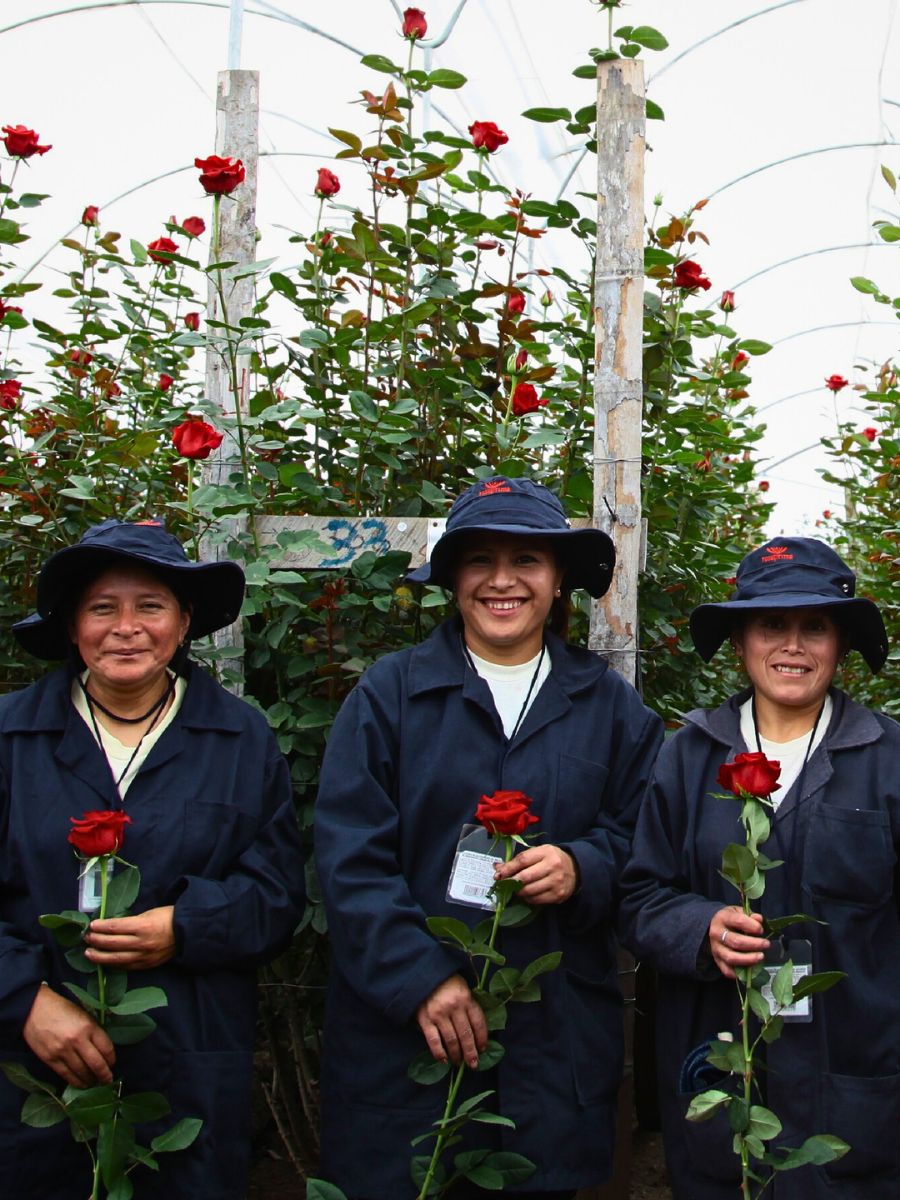
Environmental Influences on Height-Flowering Relationships
Environmental factors significantly modify the relationship between plant height and flower production. Light availability, soil fertility, water supply, and temperature all influence how plants allocate resources between height growth and reproductive development. In high-light environments, plants may invest more heavily in height to maintain a competitive advantage, potentially delaying flowering. Conversely, in resource-limited conditions, plants may shift toward earlier flowering at reduced heights to ensure reproductive success before conditions deteriorate further.
Seasonal variations also play a crucial role in shaping height-flowering relationships. Vegetative and reproductive growth of plants is more favorable in areas with higher temperatures, abundant precipitation, fertile soils, and high habitat heterogeneity, which is mainly reflected in higher plant height, larger leaves, earlier flowering time, and longer flowering duration. These findings highlight how environmental quality influences both height development and reproductive timing, with optimal conditions supporting both vigorous vegetative growth and robust flower production.
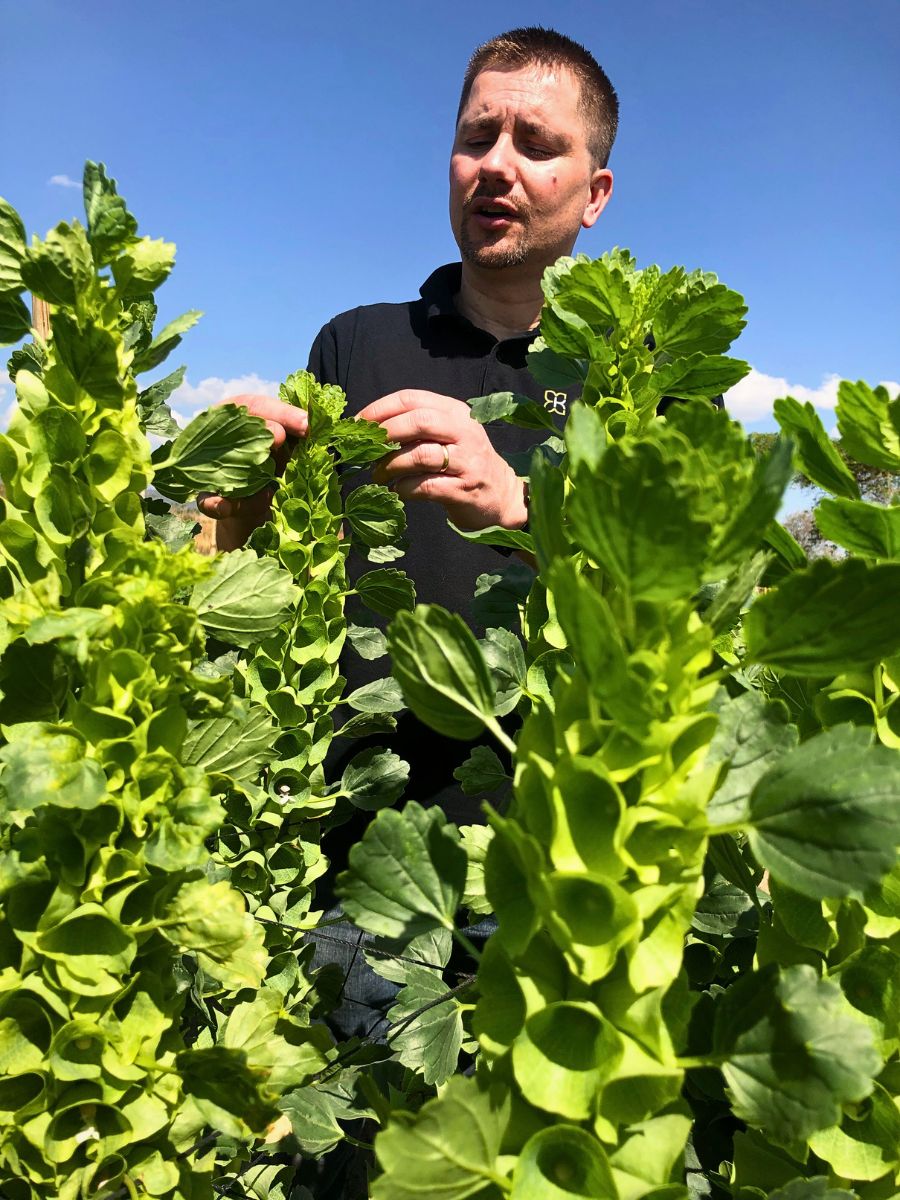
Water availability particularly affects this relationship, as drought stress can dramatically alter growth patterns. Under prolonged drought stress, plants show reduced height, leaf development, and flowering or fruit development. In dwarfed plants with diminished stem elongation, leaf development shows how environmental stress can disrupt the normal height-flowering coordination. This response is an adaptive strategy where plants reduce overall size to conserve resources while maintaining essential reproductive functions.
Architectural Considerations and Flower Display
Plant height significantly influences flower display and pollinator attraction, creating more complexity in the height-flowering relationship. Taller plants often position their flowers higher in the canopy, potentially improving visibility to flying pollinators and reducing competition with shorter species. This vertical separation can enhance pollination efficiency and reduce interference from neighboring plants.
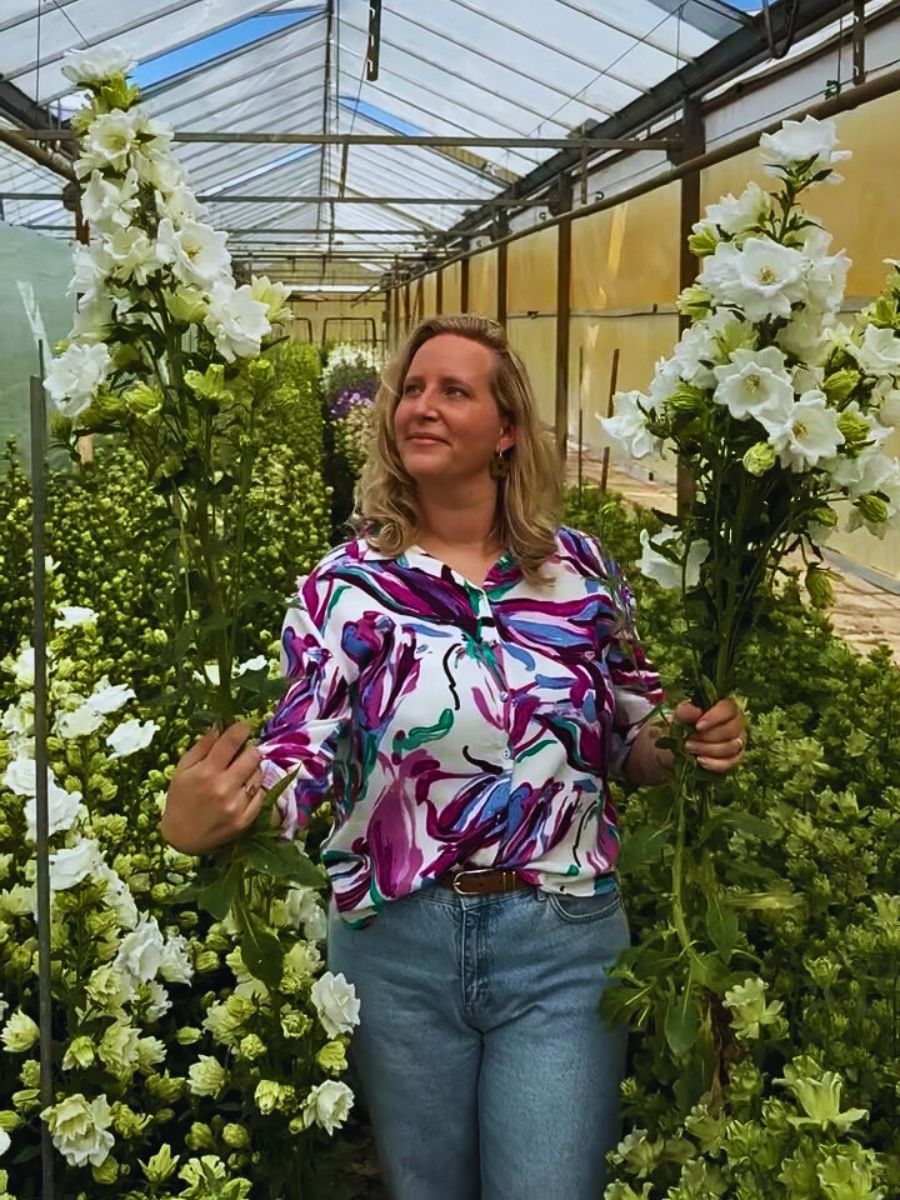
However, increased height also requires greater investment in structural support, which can redirect resources away from flower production. Plant architecture, referring here to the aerial part of a higher plant, is mainly determined by factors affecting shoot branching, plant height, and inflorescence morphology. This architectural complexity means that height affects not just the quantity of flowers produced, but also their arrangement and accessibility to pollinators.
The relationship between height and flower display varies considerably among plant families and growth forms. Climbing plants exploit the height of other species to position their flowers advantageously without investing heavily in structural support. Conversely, trees and shrubs must balance substantial structural investment with reproductive needs, often resulting in delayed flowering but potentially greater long-term reproductive success.

Plant Genetics and Hormonal Controls
The coordination between height development and flowering involves complex genetic and hormonal regulatory networks. Plant height is one of the most important components of the plant ideotype, and it affects plant biomass, yield, lodging resistance, and the ability to use mechanized harvesting. These genetic controls ensure that height development and flowering are both coordinated in ways that optimize overall plant fitness.
Hormonal signals, on the other hand, play particularly important roles in mediating the height-flowering relationship. Gibberellins, which promote stem elongation, also influence flowering time in many species. This dual role creates potential conflicts between height development and reproductive timing, requiring advanced regulatory mechanisms to balance these competing demands.
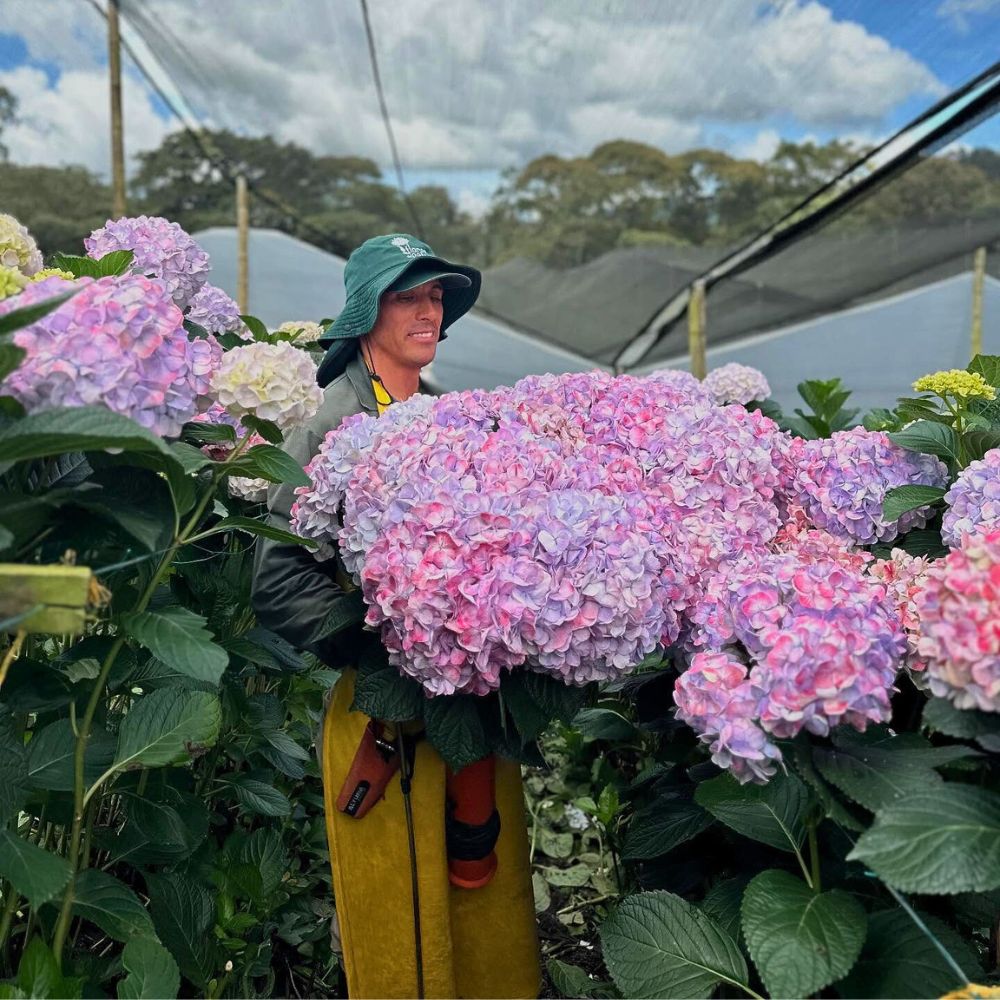
These genetic and hormonal controls have practical implications for both floriculture and horticulture, where breeders seek to optimize plant architecture for specific purposes. The ability to manipulate height-flowering relationships through breeding or hormonal treatments offers opportunities to enhance crop productivity and ornamental plant performance.
Height and Flowering Implications for Growers, Horticulturists, and Gardeners
For growers, gardeners, and plant enthusiasts, understanding the height-flowering relationship offers important insights for cultivation practices. Recognizing that height reflects resource accumulation and flowering readiness can inform decisions about plant selection, plot allocation, pruning, fertilization, and cutting. Plants that seem slow to flower may benefit from practices that promote healthy height development, while those that grow excessively tall without flowering might require interventions to redirect energy toward reproductive development.

The knowledge that plants actively regulate their height in response to competition suggests that appropriate spacing and light management can significantly influence flowering performance. Creating conditions that allow plants to achieve their optimal height without excessive competition can enhance both vegetative growth and reproductive success. This understanding also informs decisions about plant selection for specific locations and purposes. Gardens designed for continuous flowering might benefit from including species with diverse height-flowering relationships, ensuring extended blooming periods through strategic combinations of early-flowering shorter species and later-flowering taller ones.
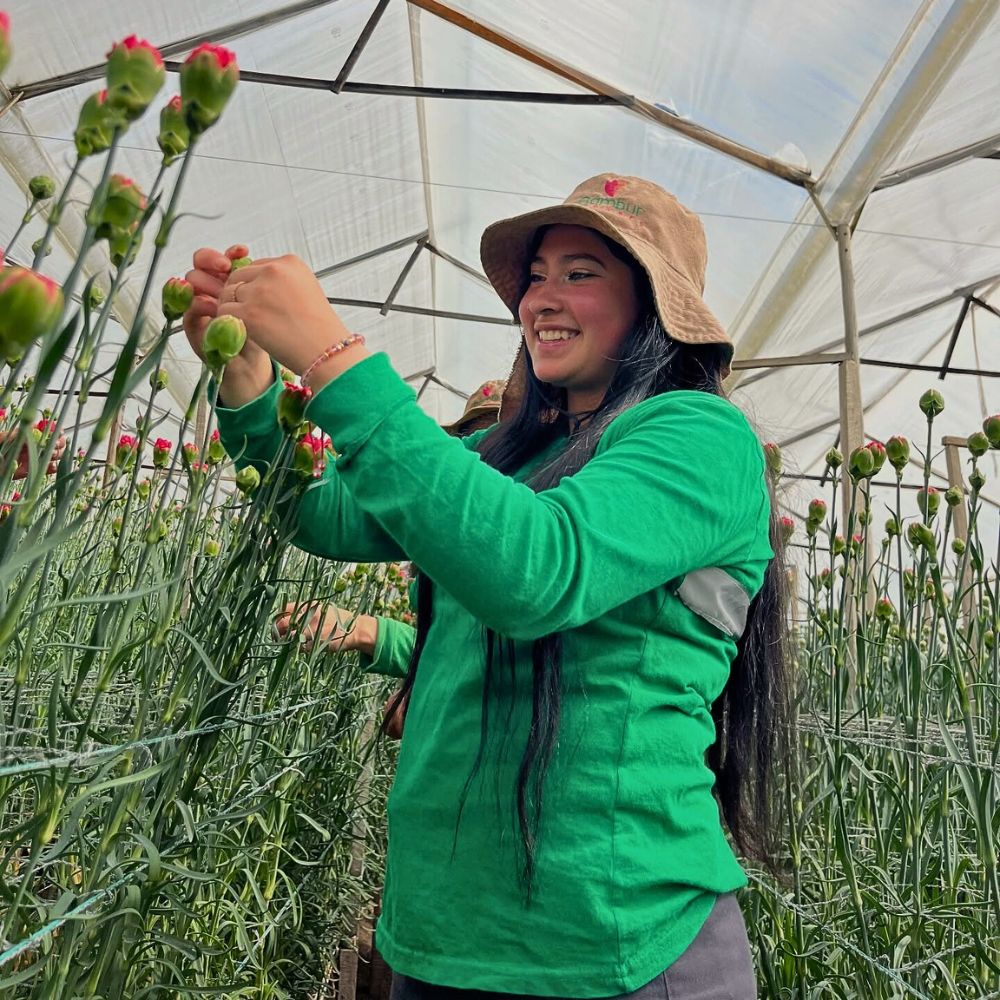
Essentially, just as the Goldilocks principle insinuates, neither extremely short nor excessively tall plants are markers of universal ideals; instead, optimal height depends on species characteristics, environmental conditions, and ecological context. Understanding these relationships helps one gain more knowledge on the complex plant biology and practical insights for cultivation.
Feature image by @fermeagricola, header image by Quang Nguyen Vinh.

